Joe Biden Wanted All Of His Kids To See Dachau. I Went, And It Has Haunted Me Ever Since.
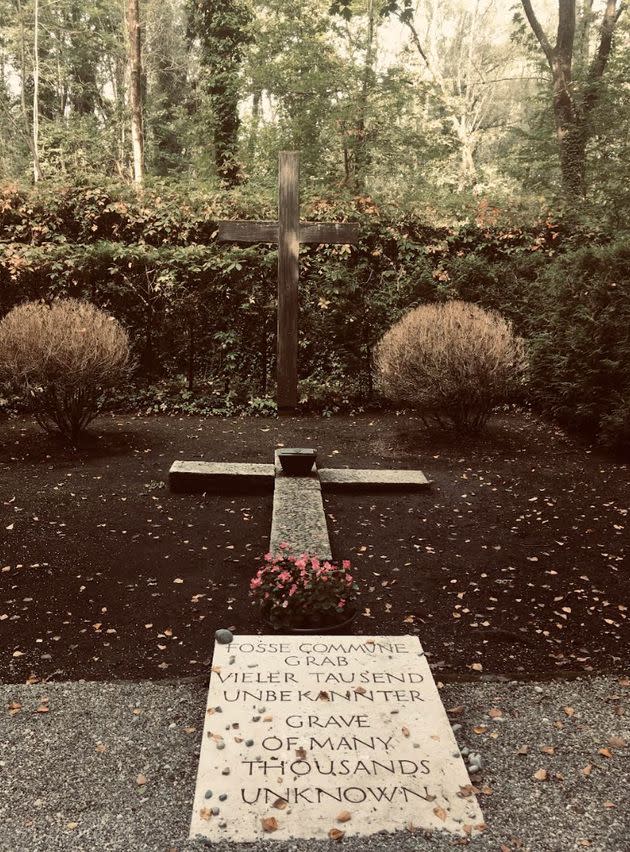
A stone marker reads "grave of many thousands unknown."
On Oct. 11, President Joe Biden spoke to Jewish community leaders about the horrific massacre of over a thousand people in Israel by Hamas terrorists. Condemning the attack, Biden spoke of an evil that “that echoes the worst and matches — in some cases, exceeds — the worst atrocities of ISIS.”
“Silence is complicity,” Biden said.
Calling on Americans to speak out against such acts of terror, he grew passionate: “I took my kids — every one, when they turned 14 years old, one at a time — put them on a plane and took them to Dachau. ... Some thought taking a 14-year-old grandchild was a mistake, but I took them one at a time. I’ve got three more to go. And, folks, it’s important.”
It is important. But at any age, it is not easy.
I visited Munich for a few days in 2019, and reserved time to go to the Dachau concentration camp.
First I visited Munich’s Holocaust Museum. There I found photographs of Sophie Scholl, guillotined at the age of 21 with her brother Hans for defying the Nazis and organizing The White Rose, a German Resistance group at The University of Munich.
Though exhibits showed Hitler’s rise to power, the museum did not mention crucial facts: six million European Jews and another five million prisoners of war were murdered by the Nazis. When I asked a docent about this information, she directed me to the exhibits I would find at Dachau.
As I anticipated the trip to the camp, I slept fitfully for several nights. I began to ask why I had given myself this emotionally challenging task. I realized that I didn’t want to go. But like President Biden, I felt a moral imperative. I needed to see it in person.
My intent to visit the Dachau had first taken shape almost 50 years earlier. Though no one took me to Germany as a teenager, I found teachers, friends, books and sources that taught me about the Holocaust.
When I was 14, I read Leon Uris’ novel “Exodus.” Uris’ book gave me a new vocabulary: Auschwitz, Birkenau, Theresienstadt and Bergen-Belsen. Its historically accurate accounts of the camps first taught me that brilliant minds designed a sophisticated rail system to transport European Jews to murder sites and gas chambers. Doctors had made poisons, and scientists had developed incineration systems to find the most efficient ways to murder millions of human beings.
Reading about the Holocaust as a teenager had a consequence. This early foundation began a lifelong resistance. It created a moral wall that strengthened as I matured. I resolved to call out antisemitism, or any ideology that oppresses those of a different race, sexuality, gender, nationality or political allegiance.
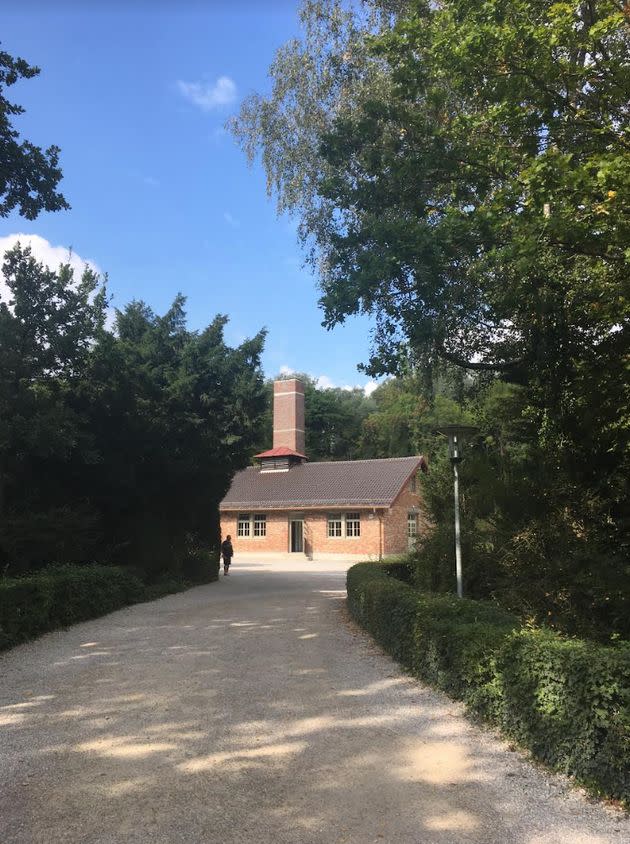
The crematorium at Dachau, as it looks to visitors today.
Not everyone can get to Dachau. However, today’s students can experience the lessons of the Holocaust wherever they are. Simon Wiesenthal, the Austrian Holocaust survivor who dedicated his life to bringing Nazi war criminals to account, wrote: “The schools would fail through their silence, the Church through its forgiveness, and the home through the denial and silence of the parents. The new generation has to hear what the older generation refuses to tell it.”
As an educator for almost 40 years, I assigned students books about the Holocaust that are now banned in some of our nation’s classrooms, including Elie Wiesel’s “Night” and Art Spiegelman’s “Maus.” In Los Angeles, I brought my students to the Museum of Tolerance. I attended a three-day training for teachers, the Holocaust Education Institute, at the LA Museum of the Holocaust (now the Holocaust Museum LA).
In these sessions, different survivors of the death camps spoke to us. Wanting to share this powerful experience with my pupils, we invited Holocaust survivor Trudie Strobel, a Judaic embroidery artist who was imprisoned as a 4-year-old, to tell her story of survival, trauma and artistic recovery toan audience of over 400 students. I learned of the online testimonials that survivors have recorded, and other free online resources available from Holocaust museums all over the country.
As an opening exercise at The Holocaust Education Institute, facilitators asked us to bring in small symbolic objects to introduce ourselves. Among our tokens were a baby blanket, a family photograph, a fuzzy bunny, a CD, a key. I brought an avocado-shaped stone I once scavenged from a beach.
As we explained the history of our objects, we found community and began to build trust. Afterward, as we toured the museum’s exhibits, the artifacts belonging to Holocaust victims had new meaning. So recently in touch with our own relics, these last items hidden in pockets or rescued from the carnage helped us find a human connection to the people whose lives were lost.
All of these experiences strengthened my resolve to go to Dachau in person. In the fall of 2019, I boarded a clean, polished steel metro for a 20-minute commute from Munich to Dachau. In my New Yorker mind, the trip felt like taking a Metro-North train from Grand Central Station to suburban Riverdale. As we left Munich behind, workday crowds filtered out, leaving a few international visitors.
I noticed a woman next to me looking at an English guidebook. After confirming the number of stops ahead, we chatted, and I asked what drew her to visit the camp.
She told me that she was a geriatric nurse in Australia. I learned that many Holocaust survivors migrated there at the end of WWII. Out of respect for all they had endured, this nurse had felt called to visit the camp in person.
Then she told me something that has haunted me ever since.
As these Holocaust survivors in her care began to die, their minds returned to the past. Though they had lived in safety for decades in Australia, when she went to give them medicine they shrank from her blond hair and blue eyes in terror, saying, “You’re a Nazi!”
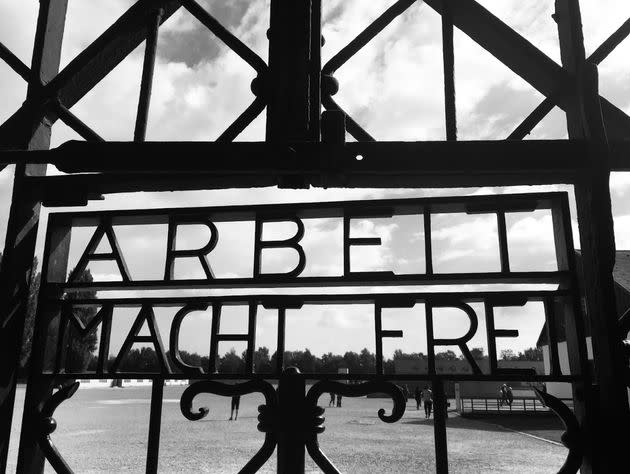
"Arbeit Macht Frei" (which translates to "Work will set you free") is a phrase from Georg Diefenbach's 1873 novel and was placed over the entrance to Dachau and other concentration camps.
At our arrival, I walked through the gates of the guardhouse beneath the famous words “arbeit macht frei” (“work sets you free”). But inside the camp, I quickly realized that a campaign of erasure had taken place. On the wide expanse of the site, its 32 original barracks had been razed.
What remains are gravel-lined squares that show the foundations of the prison blocks. A single reconstructed barrack feels inauthentic, with its clean bunk beds, its washroom, and a common room where one of the walls is lined with wood cabinetry to give each prisoner a private locker.
Despite these changes, Dachau hit me with an unexpected power.
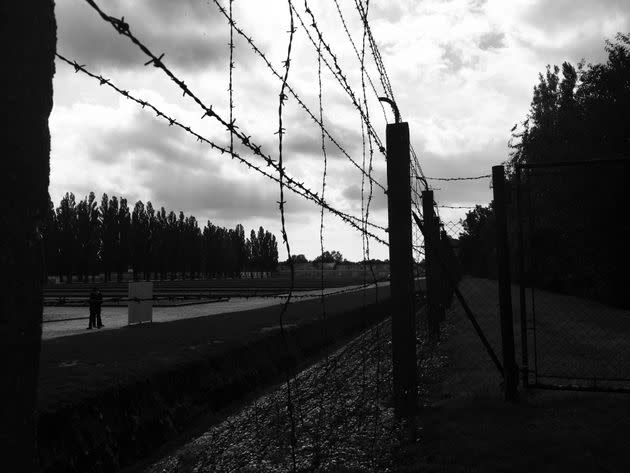
A barbed wire fence at Dachau concentration camp.
As I walked the paths of Dachau, I experienced a visceral horror at the scale of atrocity and tragedy. The fence that electrocuted prisoners still stands, bordering the deep ditch of no man’s land beyond it, where Nazi guards shot anyone who tried to escape.
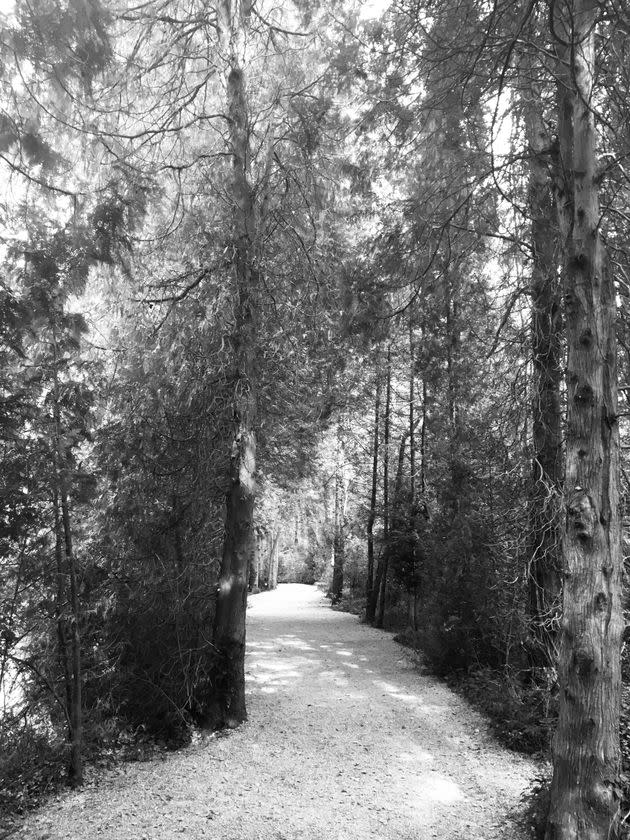
A path through trees at Dachau concentration camp.
A stone marker in a path that leads through a grove reads “grave of many thousands unknown.” Another engraved stone identifies the path as an execution site where Nazi guards shot 92 Soviet officers in 1944.
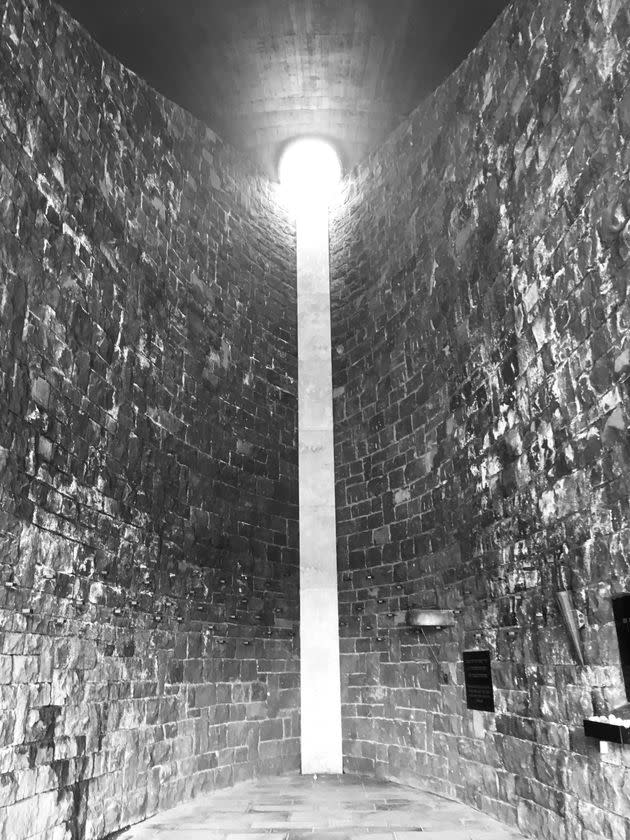
The Dachau Jewish memorial.
Built in 1967, the Dachau Jewish memorial takes visitors down a sloping path to a conical space where the only source of light comes from an oculus at its top; a marble vein in the rough-hewn stones draws the gaze upward into the light. At this profoundly moving sculpture, I saw that many visitors observed the Jewish custom of placing a small round stone to honor a loved one’s grave.
Though the total number of deaths at Dachau is difficult to ascertain, scholars say that at least 40,000 prisoners died there due to starvation, disease and executions. About 10,000 were Soviet prisoners of war, and 14,000 were Polish. More than 300 Catholic priests died there after being deliberately infected with malaria in Nazi medical experiments. An additional 2,500 prisoners were transported from Dachau and killed at Hartheim, murdered because they were deemed mentally or physically “unfit”; hundreds of them were children. Unknown hundreds of political opponents, gay men, Roma, Sinti and Jehovah’s Witnesses were also murdered at Dachau.
I do not know President Biden personally, but as he shared the importance of his own repeated trips to Dachau, it is clear to me that he values this journey as an essential part of a moral education.
In Nazi Germany, millions of people fell in line with an authoritarian madman who kindled the fire of hate, mobilizing them to comply with a system of mass murder. Though education is not a guarantee that will safeguard our country from the ever-present seduction of authoritarian solutions to social problems, learning this history strengthens our cultural resistance to hate.
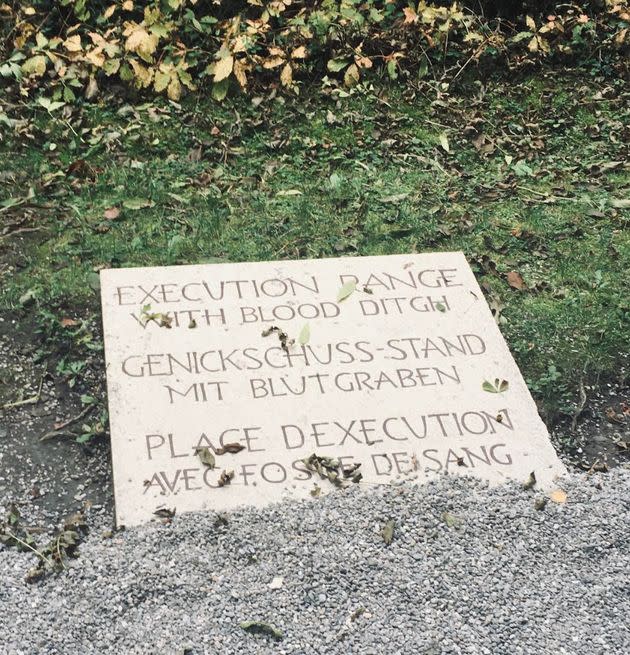
"This marker identifies an execution site where Nazi guards shot 92 Soviet officers in 1944," the author says.
After attending the Holocaust Education Institute, I more confidently recognize Nazi ideology and tactics in former President Donald Trump’s reported disdain for disabled veterans and his branding of immigrants as “murderers” and “rapists.” Just weeks ago, when a video showed Trump claiming that immigrants were “poisoning the blood of our country” and “coming in with disease,” it was impossible for me to ignore the echoes of Hitler’s language of hate that demonized Jews as “vermin.”
As I finished my tour of Dachau in 2019, I entered the guardhouse, an original building that holds the exhibits, photographs and accounts of the murders that occurred there. A torture device for flogging prisoners was part of that exhibit. As I read about the SS practice of having the victim count the blows and start again from zero when they were unable to speak, I had a physical reaction. I had to get off the premises.
I found myself hurrying to catch the next train back to Munich, back to the hotel, away from this hall of horror. When the train’s sliding doors closed behind me, I sank into a seat, relieved as we sped away.
Few people spoke on the way home. There was too much to process. We needed time. Dachau’s lessons would be taking shape in our hearts and our minds for years to come.
Charity Hume is a lifelong educator and writer. Her story “The Competition” was a finalist for the Winter 2022 Story Contest at Narrative Magazine. She is a contributing author at Ms. Magazine and Cultural Daily. A former director of the New York University Creative Writing Program, she earned a B.A. in English at Yale University, and an M.A. in English and creative writing at NYU as a creative writing fellow. After four decades of teaching in high school and university settings, she now coaches writing to students of all ages, online and in person in LA. She is currently a psychoanalytic fellow at the Psychoanalytic Center of Philadelphia, studying the therapeutic potential of writing. She can be reached through her website: www.CharityHume.com.
Do you have a compelling personal story you’d like to see published on HuffPost? Find out what we’re looking for here and send us a pitch.
